Behind the scenes of this mesmerising Toshiba ad
Illustrator Chris Martin created strange worlds and curious characters to help Psyop deliver a magical spot for a new tablet.
Pysop was asked by Toshiba Europe to visually represent the four main areas of tablet use (film and music, productivity, gaming, and connectivity) for a new ad. The agency wanted to create a unique cast of characters, objects and environments to best characterise these elements within a story.
I'd worked with Fletcher Moules (one of the Psyop directors on this project) when he was in the UK at another production studio. He thought my illustration and design style would fit the concept for Endless Performance perfectly, and so I joined the team.
My brief was to design several different worlds that the viewer would zoom through, as well as the fun, crazy characters that exist within them. Psyop wanted a level of sophistication, and an approach that was obviously vibrant and inventive, but not veering over into being overly cartoony. The team had an idea of what each world was to look like and it was up to me to bring these ideas to life.
We started out with characters and smaller elements, then moved on to the massive illustrations of the worlds. Because I was working remotely from London, I mainly communicated with Psyop in the US over email. At times it felt like the night shift in my studio.
The initial concept
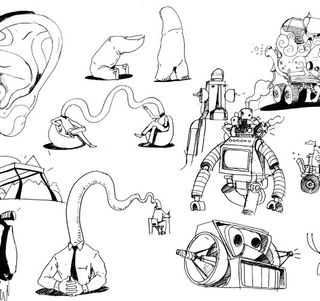
Psyop nailed down the look and feel for the spot before we started work on the characters and the environments. The outline involved the viewer whizzing through each main area of tablet use, taking in all the sights through the use of fractal zoom and the camera moving past images in a 3D space.
Ideas and sketches
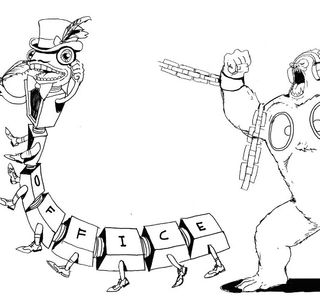
The team at Psyop worked with McCann Enterprise to determine what would best represent the key functions of the tablet within each theme, then I started working up thumbnail sketches, just thinking out loud on paper. I designed a lot - some was too much on the weird side, and not all of it was used.
Developing characters
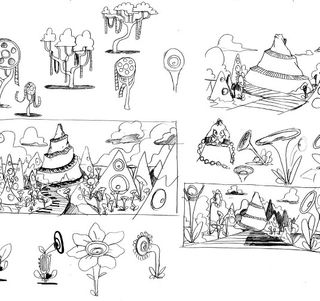
After creating the thumbnails for the characters and episodic 'moments', I sent everything to Fletch and Kylie at Psyop so they could sort out what worked best in the worlds they were creating. In the meantime I took my small sketches, enlarged them in Photoshop and then worked over them on the Wacom 5 Tablet.
Building worlds
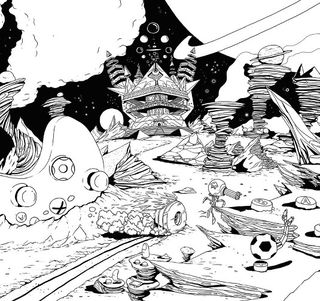
Next came the main illustrations. Once the thumbnails had been signed off, I start creating the worlds in Photoshop. They all had to be extremely big (6,000 pixels across), and they also had to support layered elements. As soon as each one was completed, it was delivered to Psyop for the painters to work their magic.
Building on the designs
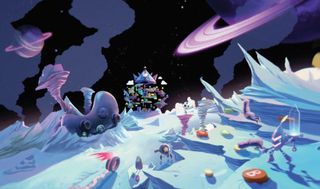
Once they had the illustrations, Psyop added a fractal zoom, which is when the camera moves through a 3D space past the illustrations while their proportions scale up. However, because anything near the edge of frame was throwing off this camera move, we had to reposition a lot of the elements nearer the centre.
Getting animated
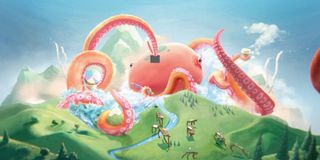
Next Psyop added 3D cameras and built scenes for the 3D animators while the 2D animators and designers were feeding their material into the Nuke software for compositing. There is a lot to see in the spot and the directors needed to be sure to strike the balance between content and viewing speed
Time to deliver
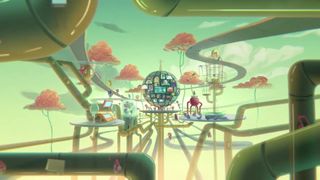
After compositing, the material was colour-graded and music added. In the final spot, the camera moves forward through the characters and detailed environments as they dissolve and reveal all four intertwining themes. I just find it amazing that my concept art actually became the final image.
Words: Chris Martin
Chris is a D&AD award winning illustrator, concept artist, and character designer hailing from North London. This article originally appeared in Computer Arts issue 224.

Thank you for reading 5 articles this month* Join now for unlimited access
Enjoy your first month for just £1 / $1 / €1
*Read 5 free articles per month without a subscription

Join now for unlimited access
Try first month for just £1 / $1 / €1
Get the Creative Bloq Newsletter
Daily design news, reviews, how-tos and more, as picked by the editors.
The Creative Bloq team is made up of a group of design fans, and has changed and evolved since Creative Bloq began back in 2012. The current website team consists of eight full-time members of staff: Editor Georgia Coggan, Deputy Editor Rosie Hilder, Ecommerce Editor Beren Neale, Senior News Editor Daniel Piper, Editor, Digital Art and 3D Ian Dean, Tech Reviews Editor Erlingur Einarsson, Ecommerce Writer Beth Nicholls and Staff Writer Natalie Fear, as well as a roster of freelancers from around the world. The ImagineFX magazine team also pitch in, ensuring that content from leading digital art publication ImagineFX is represented on Creative Bloq.
